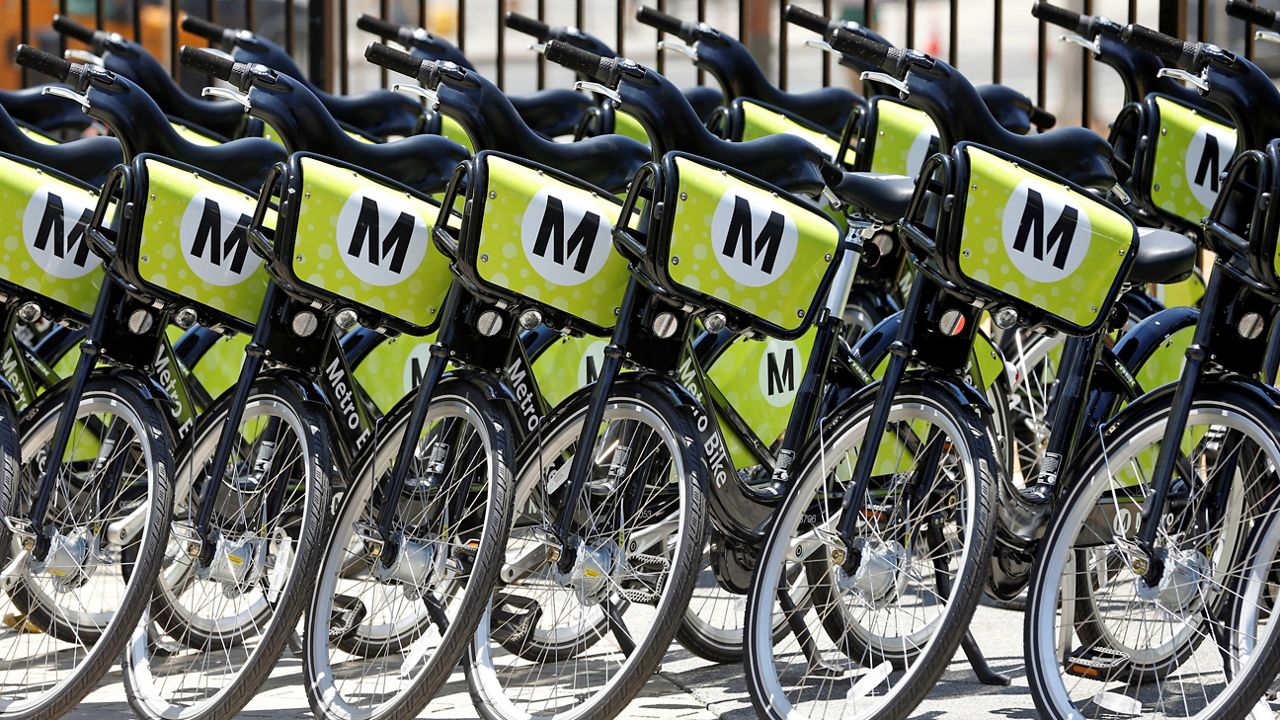LOS ANGELES — The past year has been filled with both grief and healing for Heather Sawdon, who lost her sister and best friend, Kristy Finstad, in the Conception dive boat disaster of 2019.
“She still will forever be an inspiration to me. Not a day goes by that we don’t think of good things about her,” Sawdon said.
Sawdon has devoted her time over the past year to writing a book about the Conception’s last voyage. She hopes to not only memorialize her sister and the other 33 lives lost in the tragedy, but shed light on what likely happened that fateful night last Labor Day.
She has been interviewing victims’ families, officials who were willing to speak with her about the investigation, and former passengers and crew members of the Conception and its sister boats.
“It’s this puzzle that’s slowly unraveled,” Sawdon said. “The battery theory is what the surviving crew members thought was most likely. The U.S. government needs to prevent this kind of tragedy by seeing what kind of laws they can make about safe batteries people are buying and using.”
During a public hearing Tuesday, the National Transportation Safety Board said it could not determine a conclusive ignition source of the fire, but the agency pointed to several possible causes, including the vessel’s battery charging stations.
Interviews with surviving crew members indicated the fire started in an area where cell phones, cameras and other battery items were plugged in. One of the crew members said he saw sparks when he hooked his cell phone up to an outlet charger before he went to sleep the night of the fire.
The NTSB board voted unanimously to lay blame on the boat’s operator, Truth Aquatics, for a failure to provide effective oversight of the vessel and crew member operations.
Sawdon shared that she spent countless hours going over her own experiences aboard the Conception and its sister boat, the Vision, and recalls just how many battery items were constantly charging near the entrance to the galley, the floor above the bunk area.
“Thirty-three divers, there you go, how many cameras is that? And everybody’s cell phone for 33 divers. Specifically this trip there were some incredible photographers on board and a professional photographer is going to have more than one camera, and maybe strobe lights,” Sawdon said, describing the charging stations. “Then you can just imagine this spaghetti pile of all these things that need to be charged, so many that people often bring their own power cord.”
Hobby diver Ken Dehler recalls similar experiences. He is one of the people Sawdon interviewed for her book, because less than a year before the Conception tragedy, Dehler went diving on the Vision, where a battery fire broke out early one morning at a charging station. The off-duty L.A. city firefighter happened to be awake to spring into action.
“I heard a snap and a whiz, It was the weirdest noise. So I ran over to it and I saw it was a battery charger as well as the battery. So I grabbed it and quickly put it outside,” Dehler said.
Dehler knows the extreme dangers of a fire breaking out on a boat. As a new father, he said he thinks all the time about what could have happened if he didn’t happen to be up at that early hour to use the bathroom while the other passengers slept.
“It’s just absolutely frightening to think about. There being a fire there and not being able to escape, it’s terrifying,” Dehler said.
Dehler said he extinguished the battery fire in a handwashing station with the help of another passenger and then reported the fire to the crew members, giving them the evidence.
He said he doesn’t know what the company did with that information. During the NTSB hearing Tuesday, the agency said the boat’s operator testified to never being made aware of that fire. But a crew member on that vessel said he informed the captain, and the burn marks were at some point cleaned up from the area of the charging station.
When Dehler saw the Conception engulfed in flames on the news on Labor Day of 2019, he recalls having a pit in his stomach. He said he tried to reach out to the NTSB, the U.S. Coast Guard, and the Santa Barbara Sheriff’s Department to no avail.
“My first thought was the information that I have about my previous experience on the boat would be important to authorities. But it was hard to talk to anybody. I was getting voicemails and leaving messages,” Dehler said.
In mid-August, the NTSB finally called Dehler and asked for his story.
He said the tragedy has transformed the way he looks at anything powered by lithium ion batteries.
“I never leave them unattended. That’s one rule I have. I plug them in and once they’re charged, I unplug them. And another thing is don’t buy cheap,” Dehler said.
That advice is echoed by Hal Wells, who owns Hollywood Divers, where he sells dive equipment, including underwater lights and cameras, powered by lithium ion batteries.
“People come in and say, ‘Oh, I saw the same light on Amazon for this amount,’ and they come direct from China. We’ve tested a few and some of them are total, just junk. And we’re wondering how is this allowed?” Wells said. “There’s no standards with these things.”
Wells is an avid diver himself and has been a passenger on Truth Aquatics vessels. When he heard about the fire, his mind immediately went to lithium ion batteries because of his own experience with them at his shop.
His surveillance camera in the store captured the moment a battery sitting in its charger exploded into a fireball in 2016.
“When it ignited, it flew over, it caught this back of dive equipment on fire and made a huge fire in the middle of the room. And then the sprinklers went,” Wells said. “Do not leave lithium ion batteries plugged in when you are not watching it, or nearby, or awake.”
Sawdon agrees with his warning and said that one solution she is behind is having dive boats equipped with fireproof charging cabinets.
“The doors will automatically swing shut and the vents that are on it will automatically lock closed so that all those toxic fumes that come from a battery fire won’t kill the people in the area,” Sawdon said, sharing photos of a battery charging cabinet that has already been installed on the Conception’s sister boat.
Sawdon said she hopes the NTSB’s findings lead to more safety regulations, specifically related to the charging of lithium ion batteries. She hopes the future reforms within the boating industry save lives, but are also practical to maintains boat owners’ livelihoods.
Despite the fact that lawsuits have been filed on both sides and an active federal criminal investigation is underway, Sawdon said she wants to focus her energy on solutions rather than placing blame.
“Some people have really sought to pursue blame and there will be blame cast somewhere on someone,”Sawdon said. “This is a tragedy that has affected everyone, whether you survived or not. Your loved one passed away, that’s a horrific tragedy that you’re going through. But if you’re someone that’s survived, that is a horrific tragedy too.”











